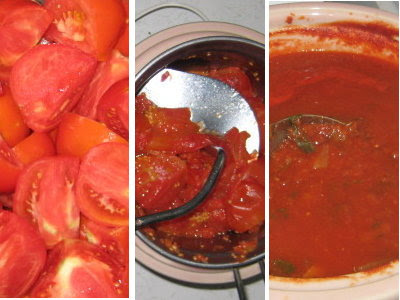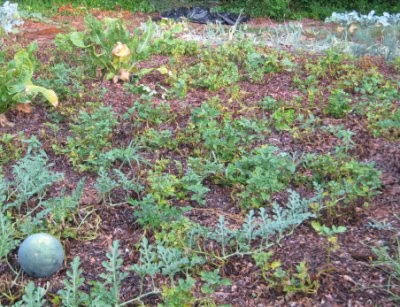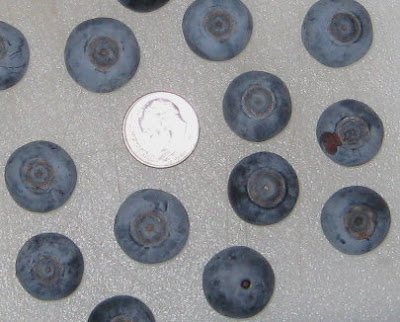 Several IDC updates ago
Several IDC updates ago, we were sharing our favorite stores to shop for stocking up. I found another one at
Kids and Canning Jars that I wanted to share with you, Produce Terminal.
This link takes you to their site where you can see if there's one near you.
The best part of inexpensive produce of course, is being able to buy large quantities to process for food storage. I feel fortunate that I'm able to grow most of my own this year, with a few exceptions like strawberries and peaches.
If, like me, you are on a limited grocery budget, then the idea of buying extra to build a food storage likely seems impossible. Again, I feel fortunate with the garden, because all that homegrown produce frees up budgeted grocery dollars for stock up items.
The point I would like to make however, is that it doesn't take a lot of money to build a food storage. It takes a different style of shopping.
Most of us probably shop on an as needed basis. We make a list of what we need or want, and then pop into the grocery store once or twice a week to get it. Gosh, I've known folks who go to the grocery store every day. Of course, as needed shopping makes sense for things like perishables (produce and dairy), but not for everything. One disadvantage of this style is that unless one manages to hit a sale, one pays full price. Another is that it is easier to make impulse buys, which can pad the grocery bill considerably. (We all know the old adage, "never go food shopping when you're hungry"!)
The other type of shopping is bulk buying, whether it's a 25 pound bag of brown rice, or a case of canned green beans. This is the way to take advantage of sale items obviously. The downside is that unless one's family is willing to eat brown rice and green beans all week, variety on a limited budget is more difficult. At least it is at first.
When I
built my first food storage, (many moons ago), we were a family of four on a super tight budget. With Y2K looming around the corner, I felt a need to do this however, so I had to approach it the best I could. In the beginning, I would commit $5 a week for nonperishables to stock up on. I won't deny that this was a slow way to approach it, but I added our own canned goods from the garden, discovered discount grocery stores, and joined a food co-op, where each month, I split bulk bags and boxes of grains, beans, dried fruits, etc., with other families.
Of course we ate out of our food storage, and gradually, as it enlarged, I needed less and less from the grocery store, and was able to devote more of my food budget to stock up items. Even dairy products, like milk and cheese, which I learned can be frozen. When I found organic milk on sale for $1.00 a half gallon, I bought several and popped them into the freezer.
I admit that it took several years to establish a pantry that we could eat for months from, but eventually it reached the point where I didn't need to buy anything extra. I could simply wait until items we were low on went on sale, so I really was able to stretch my grocery dollars a whole lot farther simply by having a food storage.
That said, here's my Independence Days Challenge for the past week. At the bottom of the post is the recipe.
1. Plant Something - nothing this week
2. Harvest something -
- sweet basil
- thyme
- oregano
- blueberries
- watermelon
- onions
- eggs (1st Welsummer egg!)
- yellow straightneck summer squash
- okra
- Roma tomatoes
- slicing tomatoes
- cucumbers
- cantaloupe
3. Preserve something -

- dehydrated remaining (locally grown) storage onions which were going bad
- froze summer squash
- froze blueberries
- froze okra
- dried sweet basil
- dried chamomile flowers
4. Waste Not
5. Want Not
- bought 2 milk crate type containers for the pantry
- bought 2, 1/2 aseptic containers of almond milk to put in the freezer
6. Build/support Community Food Systems
7. Eat the Food
- sauteed squash with onions & fresh basil
- blueberry sourdough muffins
- blueberries on morning cereal
- blueberries for snacks
- more blueberry pie
- watermelon
- steamed green beans cold in salads
- homestead omelette: our own eggs, onions, & tomatoes
- cantaloupe
- homestead salads of tomatoes and cucumbers
- and the recipe.....

This is stuffed summer squash, and it is my favorite thing to do with overgrown squashes. I grew Early Prolific Straightneck Squash, and they are a good choice for this recipe. I think any kind could be used though.
Stuffed Summer Squash
1 over grown summer squash
1/2 pound bulk sausage
small onion, chopped
2 slices homemade whole wheat bread, cubed or in crumbs
grated cheese of your choice
salt & pepper to taste
grated Parmesan cheese
Cut squash in half lengthwise. Bake or steam until tender. In the meantime, pan cook the sausage with onions. When the squash is tender, scoop out the insides to make little boats. Add the scoopings, bread crumbs, grated cheese, and seasoning to the sausage. Mix well and spoon the mixture into the squash boats. Sprinkle with Parmesan cheese and bake at 350 F until golden brown, about 20 to 30 minutes.
We ate this with a garden salad of tomato and cucumber, and more
blueberry pie for dessert!
To see what other Independence Day Challengers are doing,
click here.

















































